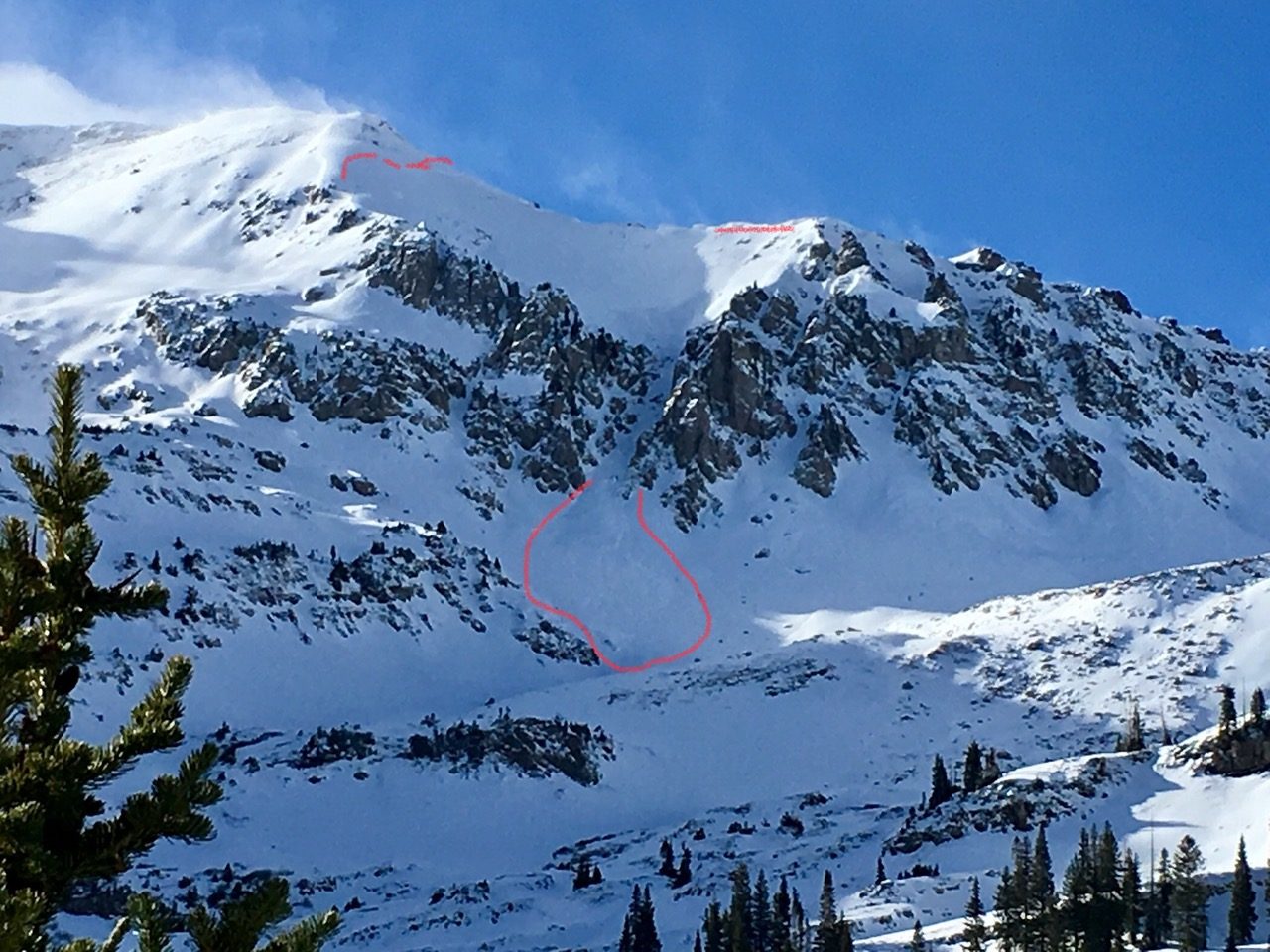Last weekend (November 3, 4, 5) we saw periods of heavy snowfall and large early season accumulations throughout the valley. The higher peaks and more favored mountains near Paradise Divide, the Ruby Range and even in the Anthracites received up to a meter of new snow in more drifted terrain. This brought a cycle of natural avalanche activity, especially on North through North East slopes where previous faceted snow from October provided a weak support structure for the new snow. Avalanches were reported on Mt. Baldy, Richmond Mountain and in Redwell Basin.
As the storm cleared on Monday and into Tuesday, significant winds continued to transport snow and likely contributed to another natural avalanche cycle earlier this week. The valley’s newest weather station on top of Cinnamon Mountain showed sustained winds in the 25-30 mph range and gusts reaching 50 mph from the North-East. These winds are great for moving snow onto leeward slopes and creating slab avalanches.
The middle and end of the week brought colder temperatures with overnight lows even dipping below zero, tapering winds and sunny skies. This rather benign weather pattern looks to continue into next week except for a quick chance for some light snow showers Sunday night. This will easily lull backcountry travelers into a more complacent mindset and draw us toward bolder lines and more dangerous terrain. Wind and storm slabs are morphing into persistent slabs with stiffer snow overlaying shallowly buried facets and weaker snow. These conditions are most likely to persist in areas where our snowpack is a little more robust, and therefore the places that seem to want to be ridden.
If you are heading into the backcountry this weekend you will likely seek out the deepest snow you can find. If the slope angle in these areas exceeds 30 degrees, bust out your shovel and your probe to see what lies below the surface. On the south facing or lower elevation slopes, you may find minimal basel facets and more stable snow. On shadier and higher slopes you will likely find well-developed facets (weaker snow) near the ground and a slab on top indicating more dangerous slopes. And after you do that, send us a note with what you find! You can drop your observations on our facebook page, by email at cbac@crestedbutteavalanchecenter.org or by clicking the observations button on our website, cbavalanchecenter.org.
IMAGE DESCRIPTION: Outline of natural avalanche observed on Richmond Mountain earlier this week





